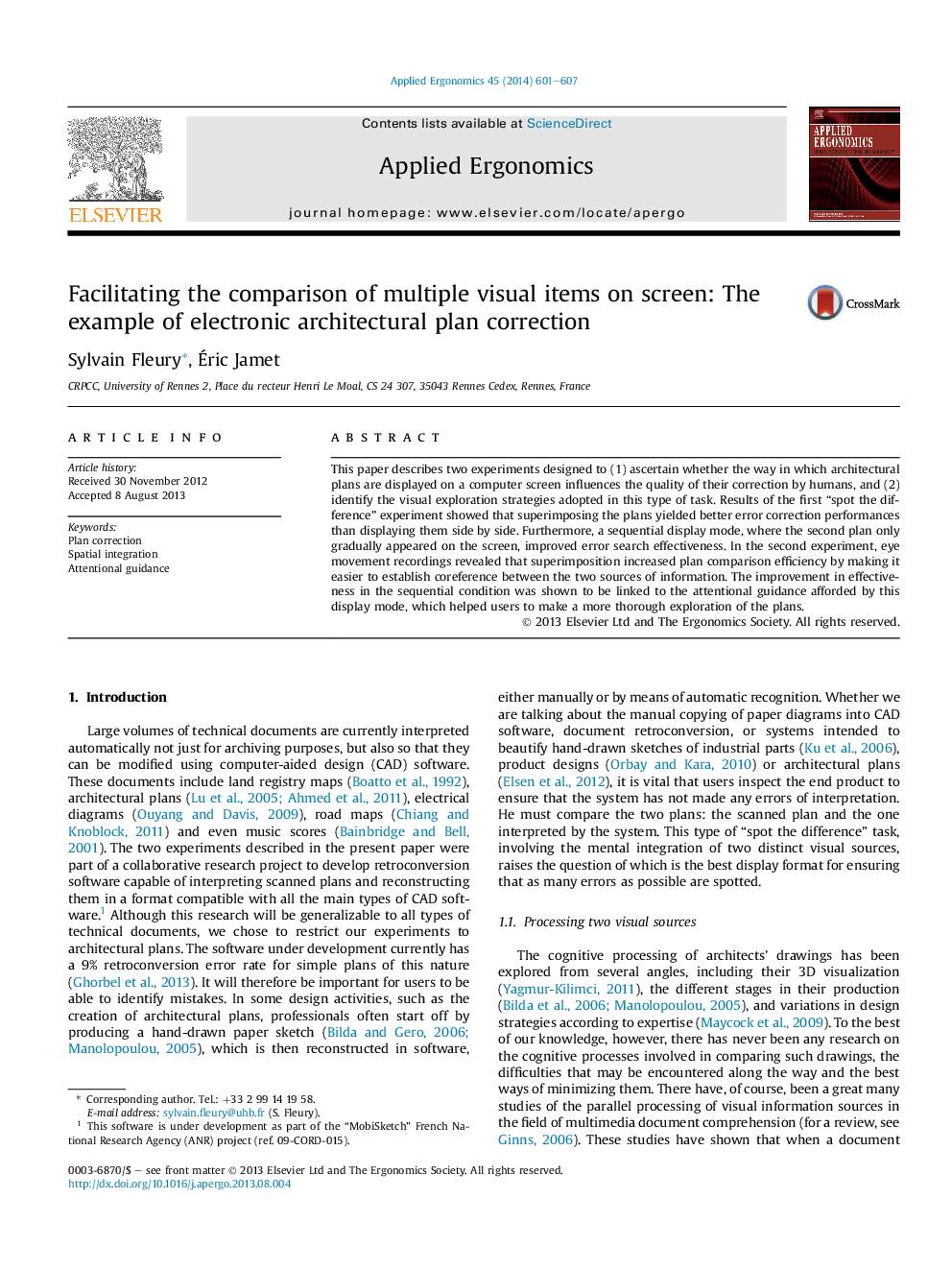| Article ID | Journal | Published Year | Pages | File Type |
|---|---|---|---|---|
| 551104 | Applied Ergonomics | 2014 | 7 Pages |
•The automatic recognition of technical documents involves a correction by an operator.•We compared three displays formats for retroconversion errors detection with architectural plans.•Superimposing the plans improves errors correction efficiency compared to separate plans.•In addition, the sequential display of the plans improves the completeness of the correction.
This paper describes two experiments designed to (1) ascertain whether the way in which architectural plans are displayed on a computer screen influences the quality of their correction by humans, and (2) identify the visual exploration strategies adopted in this type of task. Results of the first “spot the difference” experiment showed that superimposing the plans yielded better error correction performances than displaying them side by side. Furthermore, a sequential display mode, where the second plan only gradually appeared on the screen, improved error search effectiveness. In the second experiment, eye movement recordings revealed that superimposition increased plan comparison efficiency by making it easier to establish coreference between the two sources of information. The improvement in effectiveness in the sequential condition was shown to be linked to the attentional guidance afforded by this display mode, which helped users to make a more thorough exploration of the plans.
